Automatically create
Multiple Choice Polls
from your
Google Meet
chat
for
Virtual science experiments
Used by 4,000+ universities, businesses, and streamers
What does StreamAlive's
Multiple Choice Polls
do?
Introducing a vibrant way to enhance live participant interaction with StreamAlive's Multiple Choice Polls on Google Meet. Seamlessly transform your audience's chat inputs into visually engaging polls, enriching your virtual science experiments without the need for any additional screens or websites. With StreamAlive, what your attendees type in the chat is dynamically used to create Multiple Choice Polls that illuminate your session. Whether you're gauging understanding of chemical reactions, gathering hypotheses about physics experiments, or exploring the biological impacts of ecosystem changes, StreamAlive's interactive polling keeps your live audience engaged and actively participating throughout your Google Meet sessions.
StreamAlive simplifies live audience engagement during your virtual science experiments on Google Meet by integrating Multiple Choice Polls seamlessly without the hassle of codes, embeds, or complicated URLs. Educators can effortlessly launch these polls directly within the chatbox of their ongoing session. Simply prompt your students to participate in the poll by writing their responses in the chat, providing a straightforward way to gauge comprehension and keep the class interactive. This intuitive feature enables teachers to boost interaction and makes virtual learning environments just as engaging and participatory as any physical classroom setting.

* StreamAlive supports hybrid and offline audiences too via a mobile-loving, browser-based, no-app-to-install chat experience. Of course, there’s no way around a URL that they have to click on to access it.
StreamAlive can create
Multiple Choice Polls
for all event types


How you can use
Multiple Choice Polls
Once your audience gets a taste for
Multiple Choice Polls
created from
the live chat, they’ll want to see them used more often.
Test Knowledge on Chemical Reactions
Utilize Multiple Choice Polls to test your students' understanding of chemical reactions. Prompt them to predict outcomes before a virtual experiment demonstration. Their responses, collected through the live chat, are instantly turned into interactive polls, enabling a quick assessment of their grasp on the subject matter.
Gauge Hypotheses in Physics Experiments
Before conducting a physics experiment, engage your students by asking for their hypotheses via the chatbox. Use these inputs to create live polls that not only stimulate curiosity but also provide you an insight into their analytical thinking. This ensures a more participative and enriching teaching experience.
Explore Biological Concepts through Polls
When exploring biological concepts like ecosystem changes, use Multiple Choice Polls as a tool to facilitate discussion. Pose questions that allow students to express their predictions of an experiment's outcome. This interactive approach not only captivates their interest but also deepens their understanding through active involvement.
Multiple Choice Polls
can be created by
anyone running a
Google Meet
session
.svg)
.svg)
.svg)
.svg)
Powered by the chat.
StreamAlive enhances live audience interaction by allowing participants to contribute to Multiple Choice Polls directly through the Google Meet chat. This feature transforms each chat entry into a poll response, making it seamless and efficient for educators to gather input without disrupting the flow of the session.
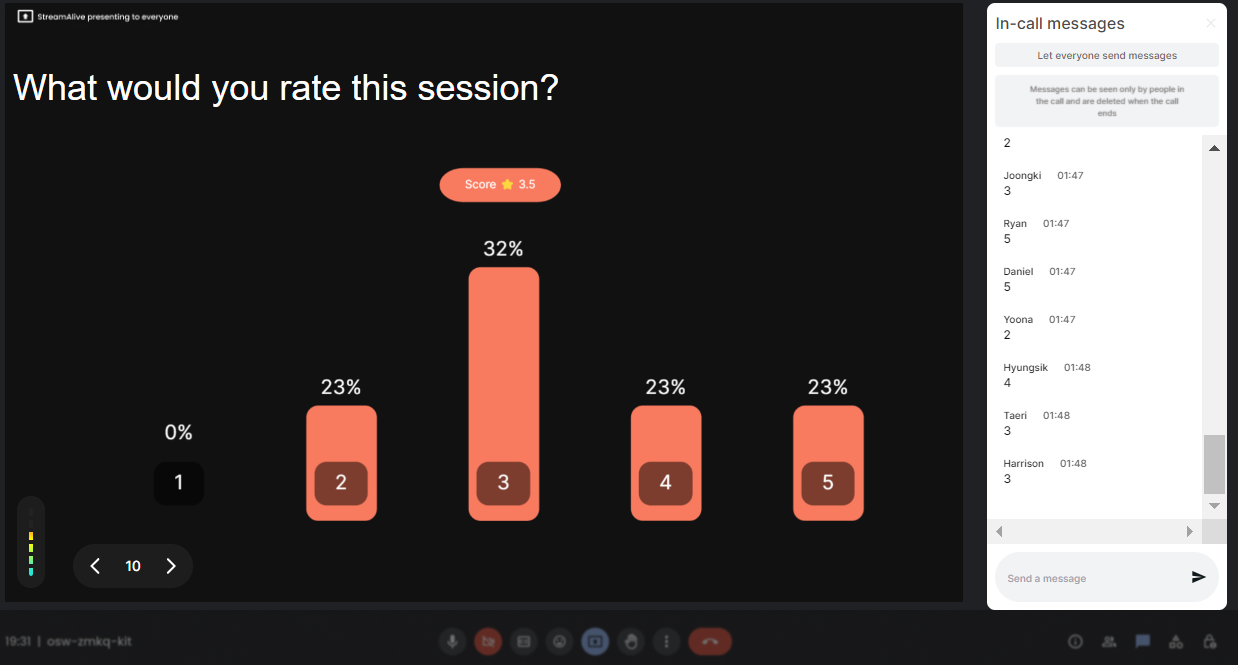
Run regular polls, multiple choice polls, or open ended polls.
Engage your students with versatile polling options. Whether you need a straightforward yes/no, multiple choice, or require more elaborate responses, StreamAlive provides a dynamic array of polling types to cater to the specific needs of any virtual science experiment.
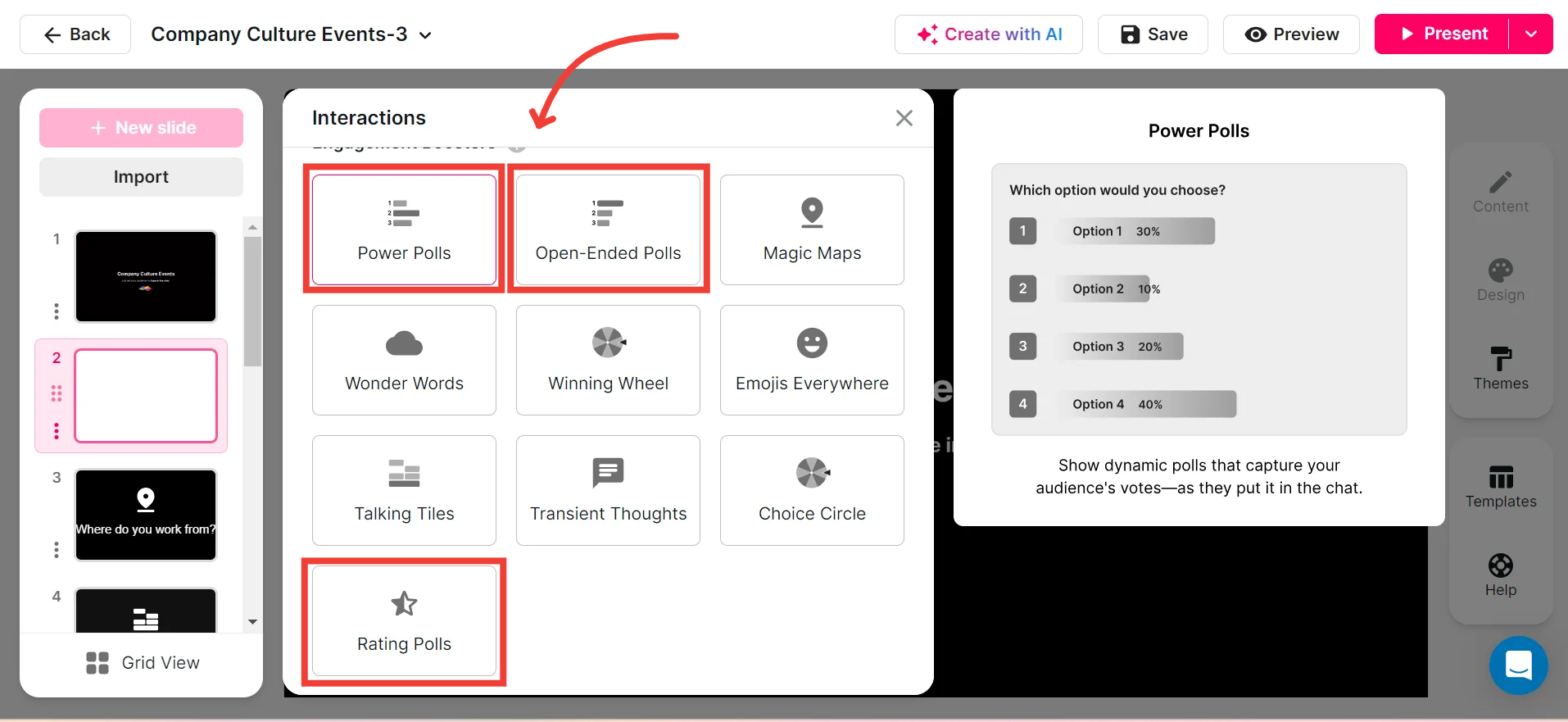
Create unlimited Multiple Choice Polls for your live sessions.
Never limit the number of questions you can ask. With StreamAlive, educators can create an endless number of Multiple Choice Polls within each session, ensuring comprehensive and ongoing live participant engagement. Keep every lesson as interactive as needed, without any restrictions.
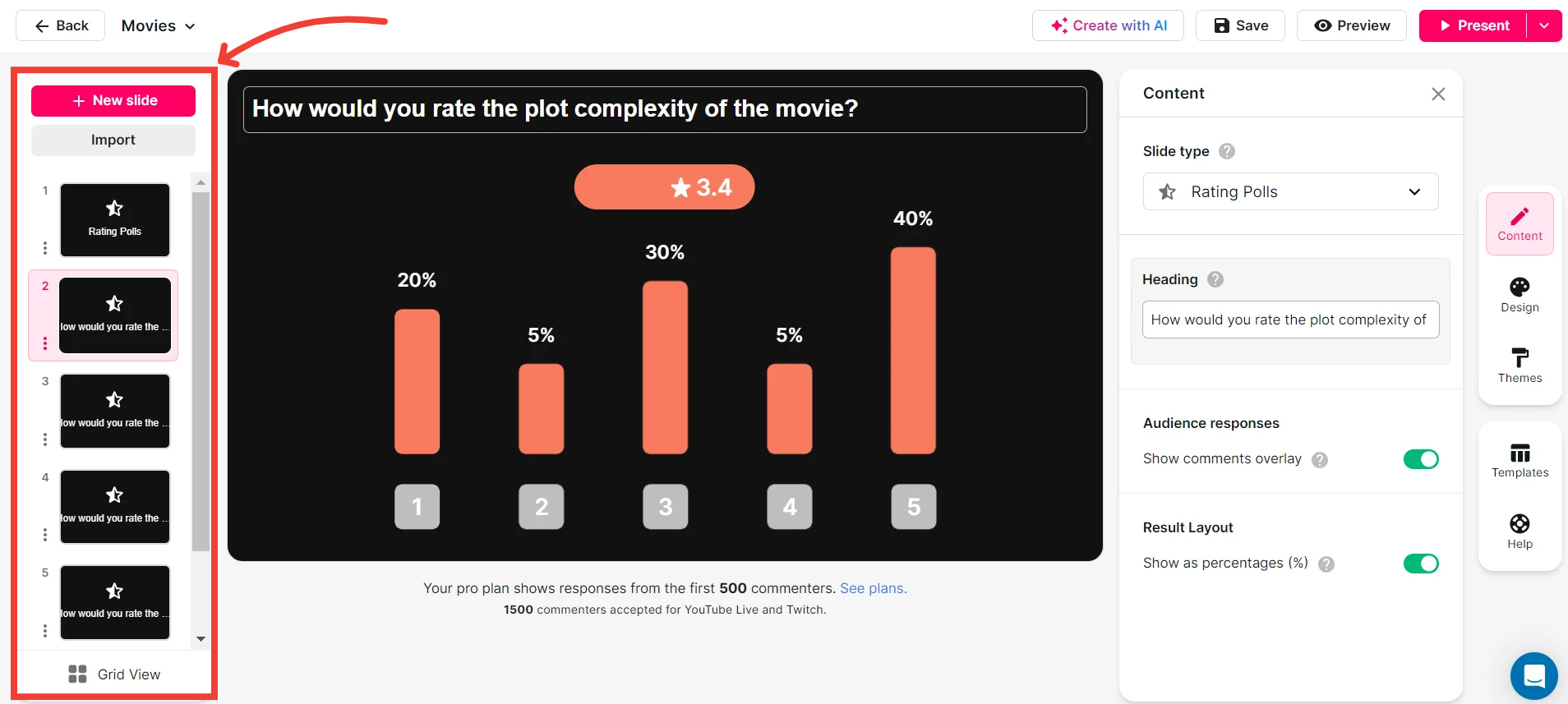
Use StreamAlive's browser-based chat to make voting anonymous.
StreamAlive prioritizes participant privacy through its anonymous voting option. Encouraging honest and open feedback, this feature allows students to share their true thoughts and novel ideas without the fear of judgment, thus fostering a more inclusive learning environment.
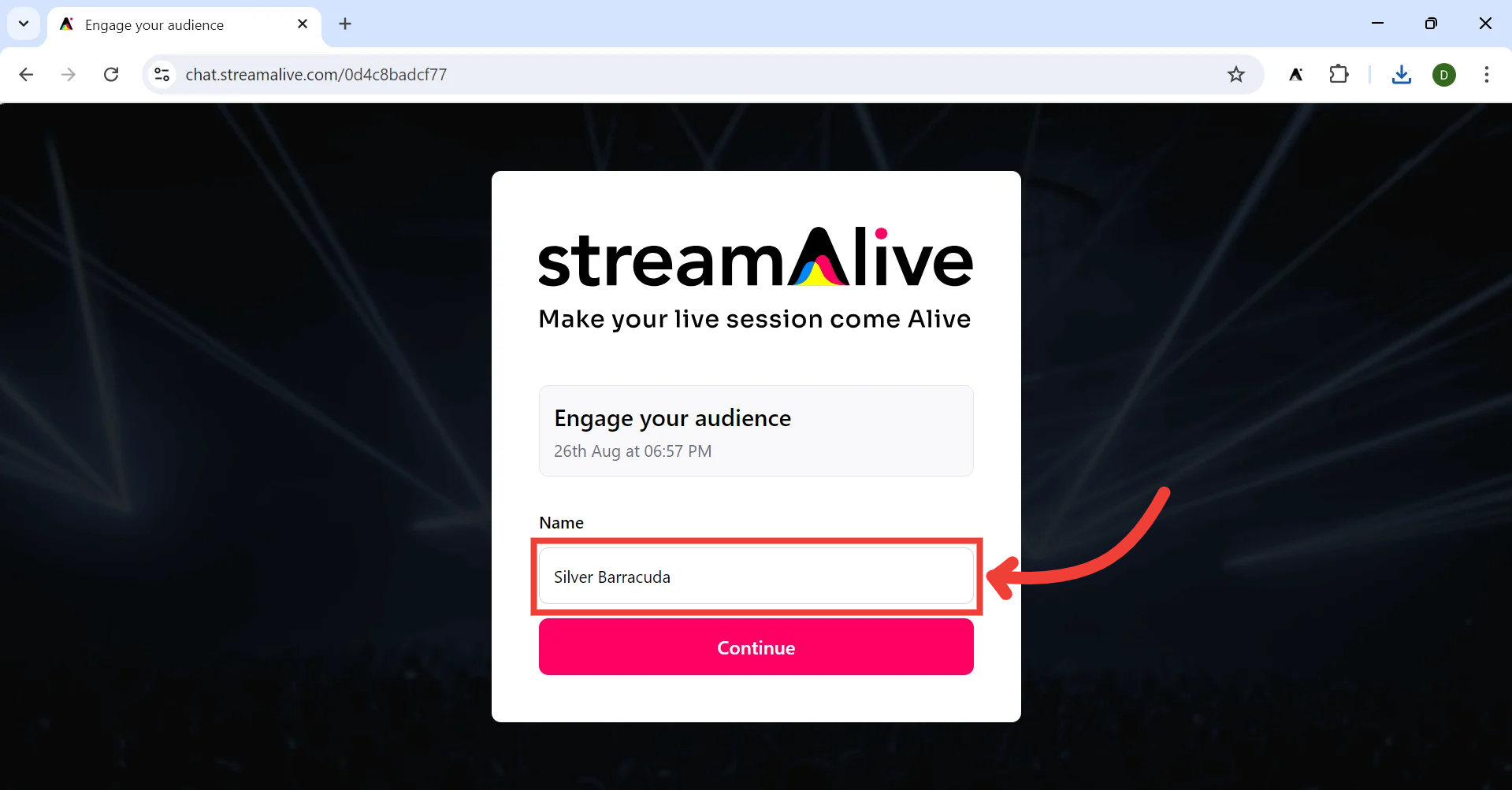
Customize how your Multiple Choice Polls look.
StreamAlive offers extensive customization options, enabling educators to tailor the appearance of their Multiple Choice Polls. Personalizing polls not only aligns them with your session's theme but also enhances visual appeal, boosting student engagement and interest.
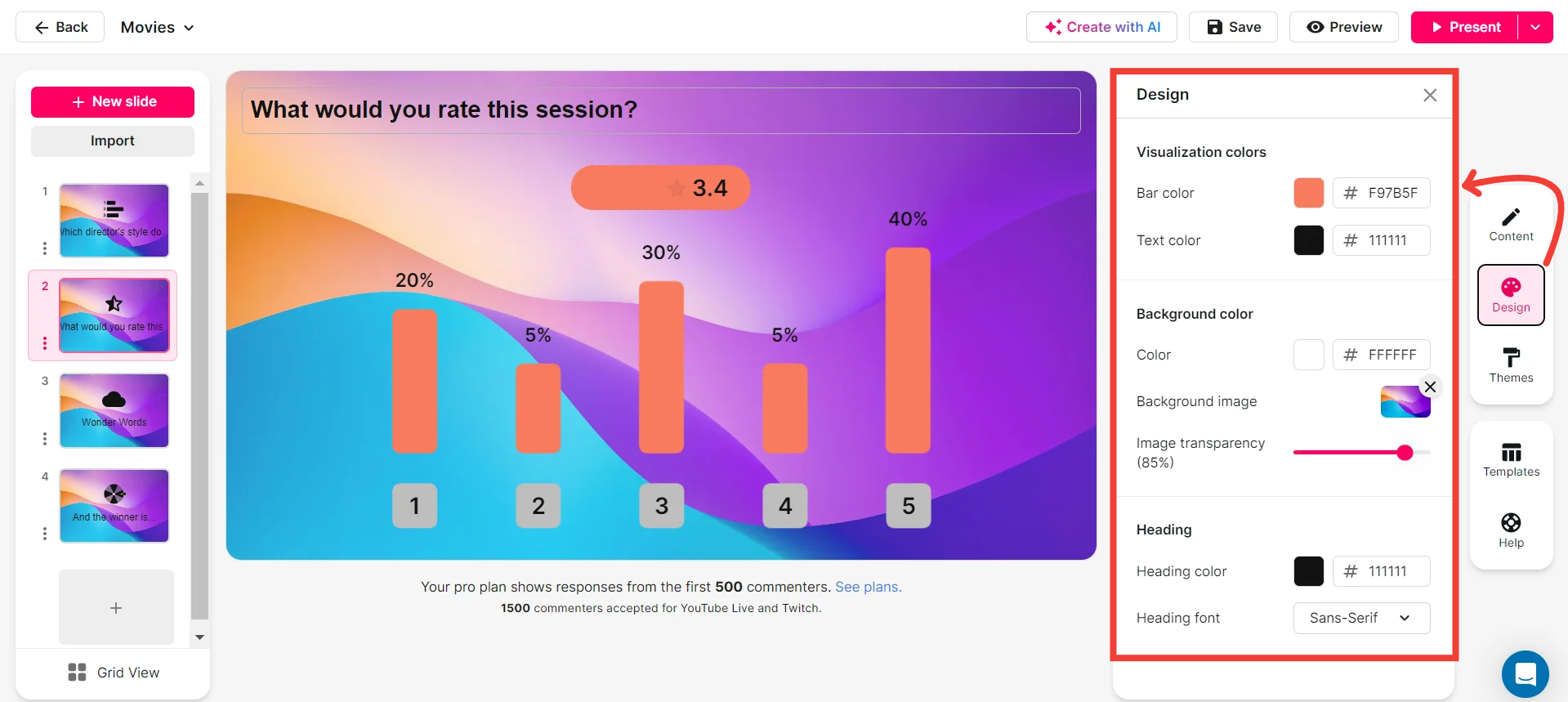
Save Multiple Choice Polls results and see who voted.
StreamAlive ensures that educators can review and analyze poll outcomes with ease. Save your poll results for future reference or analysis, and identify who participated to adjust future lessons accordingly. This data-driven approach helps in understanding student engagement and learning progression.

Chat-powered
Multiple Choice Polls
isn't the only thing
you can do with StreamAlive
Bring your audience’s locations to life on a real-time map — as they put it in the chat.
Create unlimited live polls where the audience can vote directly from the chat box.
Spin a wheel of names or words and let the spinner wheel pick a winner.
Add a bit of Vegas to your live sessions and award prizes to active users in the chat.
StreamAlive automatically saves any link shared in the chat to be shared afterwards.
Call-out your audience's chats in cool thought bubbles for everyone to see in.
Unleash a storm of emojis to find out how or what your audience is thinking.
Your audience's thoughts and opinions visualized in a cascading sea of colorful tiles.
Visualize every word (profanity excluded) of your audience's chat comments.
StreamAlive automatically sniffs out audience questions and collates them for the host.
Bring your audience’s locations to life on a real-time map — as they put it in the chat.
Bring your audience’s locations to life on a real-time map — as they put it in the chat.
Bring your audience’s locations to life on a real-time map — as they put it in the chat.
Bring your audience’s locations to life on a real-time map — as they put it in the chat.
Bring your audience’s locations to life on a real-time map — as they put it in the chat.
Bring your audience’s locations to life on a real-time map — as they put it in the chat.
Bring your audience’s locations to life on a real-time map — as they put it in the chat.
Bring your audience’s locations to life on a real-time map — as they put it in the chat.
Bring your audience’s locations to life on a real-time map — as they put it in the chat.
Bring your audience’s locations to life on a real-time map — as they put it in the chat.
Bring your audience’s locations to life on a real-time map — as they put it in the chat.
Bring your audience’s locations to life on a real-time map — as they put it in the chat.
Bring your audience’s locations to life on a real-time map — as they put it in the chat.
Bring your audience’s locations to life on a real-time map — as they put it in the chat.
Bring your audience’s locations to life on a real-time map — as they put it in the chat.
Bring your audience’s locations to life on a real-time map — as they put it in the chat.
Bring your audience’s locations to life on a real-time map — as they put it in the chat.
Bring your audience’s locations to life on a real-time map — as they put it in the chat.
Bring your audience’s locations to life on a real-time map — as they put it in the chat.
Bring your audience’s locations to life on a real-time map — as they put it in the chat.
Bring your audience’s locations to life on a real-time map — as they put it in the chat.
Bring your audience’s locations to life on a real-time map — as they put it in the chat.
Bring your audience’s locations to life on a real-time map — as they put it in the chat.
Bring your audience’s locations to life on a real-time map — as they put it in the chat.
Bring your audience’s locations to life on a real-time map — as they put it in the chat.
Bring your audience’s locations to life on a real-time map — as they put it in the chat.
Bring your audience’s locations to life on a real-time map — as they put it in the chat.
Bring your audience’s locations to life on a real-time map — as they put it in the chat.
Bring your audience’s locations to life on a real-time map — as they put it in the chat.
Bring your audience’s locations to life on a real-time map — as they put it in the chat.
Bring your audience’s locations to life on a real-time map — as they put it in the chat.
Bring your audience’s locations to life on a real-time map — as they put it in the chat.
Bring your audience’s locations to life on a real-time map — as they put it in the chat.
Bring your audience’s locations to life on a real-time map — as they put it in the chat.
Bring your audience’s locations to life on a real-time map — as they put it in the chat.
Bring your audience’s locations to life on a real-time map — as they put it in the chat.
























.png)







.svg)
.svg)
.svg)
.svg)
.svg)